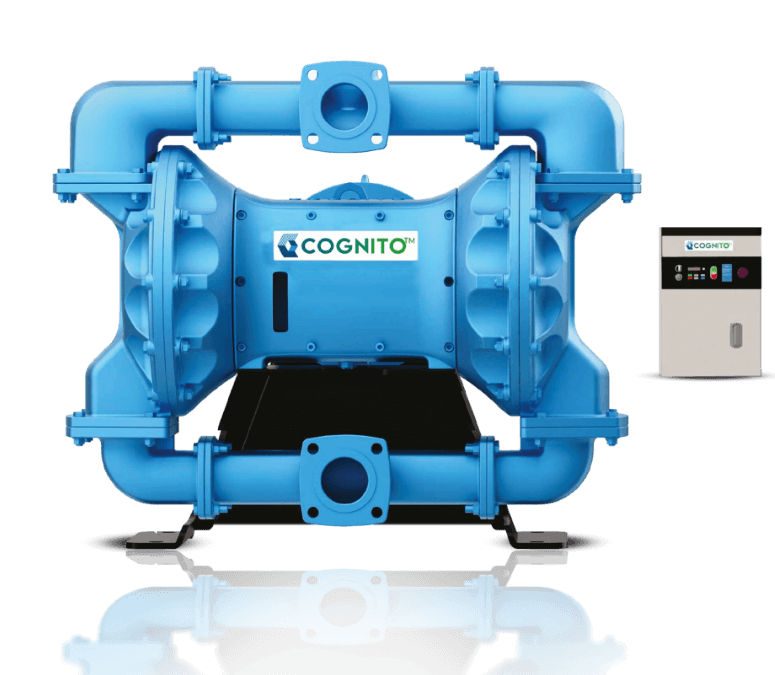How does a hydraulic diaphragm metering pump work?
 |
| How does a hydraulic diaphragm metering pump work? |
A hydraulic
diaphragm metering pump [a1] operates as
a positive displacement pump, utilizing a flexible diaphragm actuated by a
hydraulic system for fluid pumping. This mechanism involves a piston or plunger
applying pressure to one side of the diaphragm, inducing flexion, and creating
a vacuum on the opposite side. This design allows the pump to handle a diverse
range of chemicals, including acids, bases, corrosives, viscous liquids, and
slurries. The reciprocating piston, either in direct contact with the process
fluid or separated by a diaphragm, generates the pumping action. Diaphragms are
activated by hydraulic fluid situated between the piston and the diaphragm.
These pumps find application in scenarios necessitating low flow rates, high
system pressures, or precise and accurate feed rates. The pump's flow rate is
adjustable through variations in stroke length, effective stroke length, or
stroking speed, often facilitated by a micrometre screw adjustment.
Industrial-grade metering pumps, when correctly installed, typically offer a
steady-state accuracy of +/- 1.0% or better.
How Does a Hydraulic Diaphragm Metering Pump Ensure Accurate
Dosing?
The hydraulic
diaphragm metering pump is designed to deliver precise dosing through a
combination of distinctive features and control mechanisms. As a positive
displacement chemical dosing device, it displaces a fixed amount of fluid with
each stroke, offering meticulous control over the pumped volume. The pump's
flow rate is adjustable through various means, such as varying stroke length,
effective stroke length, or stroking speed, often facilitated by a micrometre
screw adjustment. Incorporating Variable Frequency Drives (VFDs) enhances
dosing accuracy, allowing for speed adjustments in response to changing process
conditions. The pump's turn-down capabilities enable accurate chemical dosing
across a spectrum of flows, adapting to variations in pressure and temperature.
Remote adjustment of the flow rate is facilitated by actuators that modify
stroke length or motor speed, ensuring precise chemical dosing even under
fluctuating process conditions. These features collectively establish the hydraulic
diaphragm metering pump as a reliable and accurate solution for chemical dosing
applications.
Exploring the Crucial Role of Hydraulic Diaphragm Metering
Pumps
Hydraulic
diaphragm metering pumps play a pivotal role across diverse industries
owing to their distinctive pumping mechanism and associated advantages.
Renowned for their versatility, these pumps find application in a spectrum of
sectors such as oil and gas production, refineries, chemical and petrochemical industries,
pharmaceuticals and cosmetics, as well as food production and packaging,
particularly in bottling processes. Precision is a hallmark of these pumps,
offering meticulous hydraulic control with minimal maintenance requirements, as
the robust diaphragms ensure consistently accurate metering. Safety is
paramount, with features like a pressure relief valve guarding against overload
and a diaphragm rupture warning system preventing the mixing of feed chemicals
with hydraulic oil. The hydraulic fluid utilisation enhances efficiency by
generating back pressure, reducing diaphragm stress, and extending its
operational lifespan. Renowned for long-term reliability, these pumps are
indispensable in the pharmaceutical sector, excelling in handling a broad spectrum
of chemicals, including corrosive or viscous substances, and operating
seamlessly at high pressures, making them essential for precise chemical dosing
without wastage across varying flow rates.
How does a hydraulic diaphragm metering pump work?
The operational efficiency of a hydraulic diaphragm metering pump is orchestrated through a
systematic sequence of movements and mechanisms. Initiated by the motor-driven
motion of a piston or plunger, the first step involves creating pressure on one
side of the diaphragm. This pressure prompts the diaphragm to flex, generating
a vacuum on the opposite side that facilitates the intake of fluid into the
pump chamber. As the piston retracts, the diaphragm returns to its initial
position, expelling the fluid from the pump chamber into the discharge line—a
decisive pumping action. Integral to the pump are inlet and outlet check valves
that ensure the correct flow direction: the inlet valve opens during
diaphragm-induced vacuum, permitting fluid entry, while the outlet valve opens
as the diaphragm expels fluid, enabling its exit. The pump's flow rate can be
finely tuned through adjustments to stroke length, effective stroke length, or
stroking speed, typically facilitated by a micrometre screw. Acting as a
protective medium, hydraulic fluid positioned between the piston and diaphragm
safeguards the latter, prolonging its life and guaranteeing consistent and
accurate metering. Through this meticulous process, the hydraulic diaphragm metering pump
excels in the precise and consistent pumping of fluids, even amid fluctuating
process conditions.
What is the function of metering pump?
Metering pumps, alternatively known as dosing pumps or
proportioning pumps, hold a pivotal position across diverse industries,
primarily attributed to their capability to deliver meticulous flow rates and
uphold consistent dosing across a broad spectrum of operational conditions.
Their fundamental role lies in the addition of small yet precisely measured
volumes of liquids into various fluid streams or vessels. The significance of
metering pumps spans multiple sectors, including water treatment, where they
are instrumental in ensuring the precise dosing of chemicals for effective
water treatment. In the chemical industry, these pumps find application for the
accurate dosing of a variety of chemicals into the processing stream. In
pharmaceuticals, metering pumps play a crucial role in the precise dosing of
ingredients and chemicals during the manufacturing process. The food and
beverage industry utilises these pumps for the exact dosing of additives,
flavours, and other ingredients, ensuring precision in quantities. In the oil
and gas sector, metering pumps are employed for injecting chemicals at high
pressure into the reservoir, contributing to enhanced oil recovery. The
selection of an appropriate metering pump is contingent on factors such as
liquid viscosity, temperature, discharge pressure, flow rate, and the types of
materials in contact with the liquid. Consisting of a pump head and motor, complemented
by a manual or electronic adjustment system, the basic structure of a metering
pump guarantees accuracy, ensuring the precise addition of measured amounts at
the right juncture.
Idex: The leading manufacturer and supplier of hydraulic
diaphragm metering pumps
For over 70 years, IDEX Corporation has been a pioneering
force in diaphragm and dosing metering technologies, showcasing its expertise
through the Pulsafeeder unit. Within this unit, the hydraulic diaphragm metering pumps stand out for their robust
construction, reliable performance, and adherence to API-675 standards. A
standout product in this line is the PULSAPRO 7120, a hydraulically balanced
diaphragm metering pump renowned for positive displacement, leak-free
operation, and engineered precision, ensuring enduring dependability. It also
complies with API-675 standards, making it suitable for diverse industries such
as oil and gas, petrochemicals, chemical processing, power generation, and
water and wastewater treatment. Another noteworthy offering is the PULSAR
Metering Pump, which represents a technological leap in chemical feed solutions
with optimal features and streamlined selection processes. This pump promises a
competitive cost structure, long-term value, and exceptional performance.
IDEX's commitment extends to tailored solutions for varied
applications, ranging from basic manual pumps to advanced electronic
counterparts equipped with features like remote control and monitoring. The
metering pumps from IDEX are characterized by their diverse capabilities,
encompassing high-pressure performance, precise dosing, and low flow rates.
Conclusion
The hydraulic diaphragm metering pump stands as a testament to precision, reliability, and efficiency in fluid dosing applications. Its positive displacement mechanism, facilitated by a hydraulic system, ensures accurate metering of a diverse range of chemicals across industries. The robust construction and meticulous engineering of these pumps, particularly exemplified by IDEX's PULSAPRO 7120 and PULSAR Metering Pump, make them indispensable in critical sectors like oil and gas, petrochemicals, chemical processing, power generation, and water treatment. The enduring dependability, compliance with industry standards, and innovative features, such as remote control and monitoring, underscore IDEX's commitment to providing tailored and advanced solutions for varied dosing needs. As a leading manufacturer, Pulsafeeder from IDEX continues to play a pivotal role in advancing metering pump technologies, ensuring precision, reliability, and efficiency in fluid handling processes across diverse applications.



Comments
Post a Comment